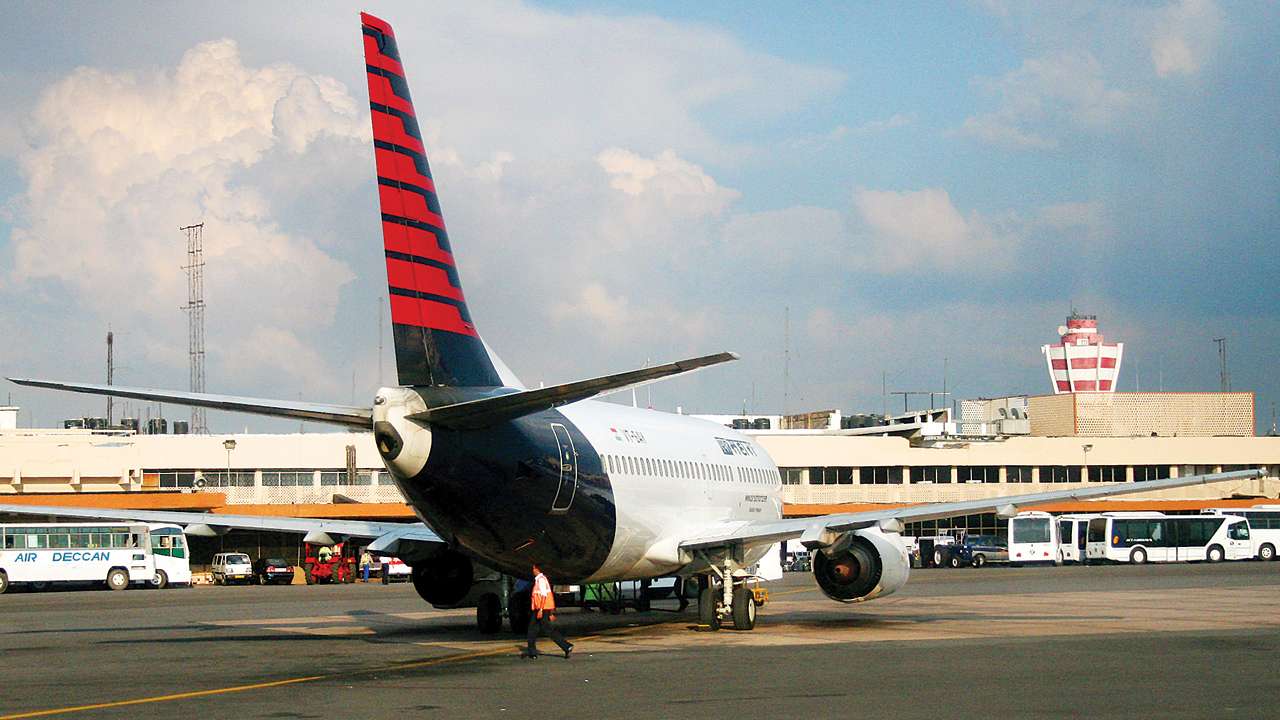
A major conundrum facing India’s aviation industry is the high growth rate of passenger traffic, both domestic and international.
CAPA, a highly regarded private consultancy, has predicted domestic traffic to grow at 14-16 per cent annually, while internationally, traffic is pegged to rise by 10-12 per cent from FY2020.
IATA has also predicted that India will be the third largest air passenger market by 2025.
While the top dozen airports make profits, the rest 100 odd are loss-making. Of these, half-a-dozen private airports also share their revenue with the Airports Authority of India (AAI). The rest are owned and managed by the AAI, which cross-subsidises the balance.
While the present double digit growth in passenger traffic is likely to continue, massive investments in airport and air traffic management is needed to overcome a deficient infrastructure.
Despite double digit growth, profitability is declining. The original national carriers, Air India and Indian Airlines, were merged in July 2007 in a hair brained scheme devised by the then minister.
The new entity has not managed to survive without the government’s life support. Since it’s fully owned by the government, no attempt has been made by the previous or the present government to revive it, as was done in the case of Satyam in 2009 or the Japan Airlines.
It’s painful to see that recently the government formed an SPV and transferred Rs 29,000 crore out of its Rs 55,000 crore debt, hiving off the profitable Air India Air Transport Services.
Meanwhile, Air India is fast losing it’s market share and may soon become irrelevant. Justifying it as a cost cutting measure, Air India has reduced its Global Distribution System (GDS) agents to one, Travelport, which is represented in India by owners of Indigo Airlines - a direct conflict of interest.
The result is that the catchment area of passengers for Air India has shrunk, resulting in the once-premier airline announcing suspension of three flights from Delhi - to Madrid, Birmingham and to Birmingham via Amritsar, respectively.
As for Kingfisher, Vijay Mallya, is fighting against extradition in London courts.
Jet Airways, started and owned by the enigmatic Naresh Goyal as a first class full service airline since 1992, too is fighting for survival.
In 1997, the business model of airlines in India changed dramatically with the arrival of low-cost carrier, Air Deccan. This and other airlines gave up on the glamour quotient, providing just point to point services, sans any frills and lower ticket prices.
With the Indian economy growing at 7 per cent plus, there was an air traffic boom. A lot of people who used trains, switched to LCCs.
While growth in air traffic has been in double digits for the last ten years, the growth in railway traffic for two tier coaches and above has been minimal.
Full service airlines, Air India, Kingfisher and Jet Airways, began their low cost subsidiaries. However, by not closing their full services, they suffered.
With high growth of passenger traffic, airlines started ordering new aircraft. Indigo in 2005 astounded everyone by ordering 100 single-aisle Airbus A320-200 aircraft and followed this up in 2011 by ordering another 180 aircraft of the same type, placing yet another order for 250 Airbus A320-Neo in 2015.
Meanwhile in 2016, the government allowed 100 per cent foreign equity in airlines, but kept a cap of up to 49 per cent equity for foreign airlines wanting to invest in Indian carriers, mindful of the international requirement that an airline must be majority-owned and effectively controlled by the nationals of their country.
As new aircraft started arriving to join the fleet, the need to fill them up meant that prices had to be kept low, given India’s price-sensitive market.
A new system of computerised ticket price management was introduced to fill up seats. However, as the seat capacity in India grew, the need to keep prices low to attract travellers became desperate.
To add to this, there were two more variables that mattered. The first were oil prices, which keep fluctuating. But in India, domestic oil prices are kept artificially high by oil companies and the government benefits when prices go up as their share of tax revenue also increases. Therefore, there is little reason for them to lower Air Turbine Fuel (ATF) rates.
The second factor are foreign exchange rates. As the rupee slides down, airlines have to pay more for ATF in Rupee terms, which reflect on their balance sheet.
The net outcome is that the airline industry in India lost S1.7 billion in FY2018 and may lose another $550-700 million in FY 2019.
As more aircraft join the fleet, these losses are likely to continue. As airlines go into losses, the banking sector comes into play. While private banks tend to shy away from such risky loans, it is the public sector banks, in particular the State Bank of India, that gets hit.
Public sector banks are not only nudged to give loans, but when these loans become nonperforming, are nudged to convert them into equity at a high rate, thereby absorbing partially the losses of the airlines.
The government must now reduce the tax burden on airlines, both directly and through unnecessary taxes/charges of supply of ATF, which is both monopolistic and very high.
With such high growth rate of traffic,it is unlikely that revenues will fall. To avoid becoming an oligopolist structure, indiscriminate ordering of aircraft should be examined by some competent authority like the Competition Commission.
DGCA is obligated under Aircraft Rules to look into ‘excessive and predatory’ pricing.
Author is Chairman of International Foundation for Aviation, Aerospace and Development